Here's how to make turkey stock with the carcass from a cooked turkey. Place it into a large stock pot with lots of water, add some fresh aromatics and herbs, along with plenty of black peppercorns. After a few hours of gentle simmering, you will have the perfect pot of flavorful turkey stock.
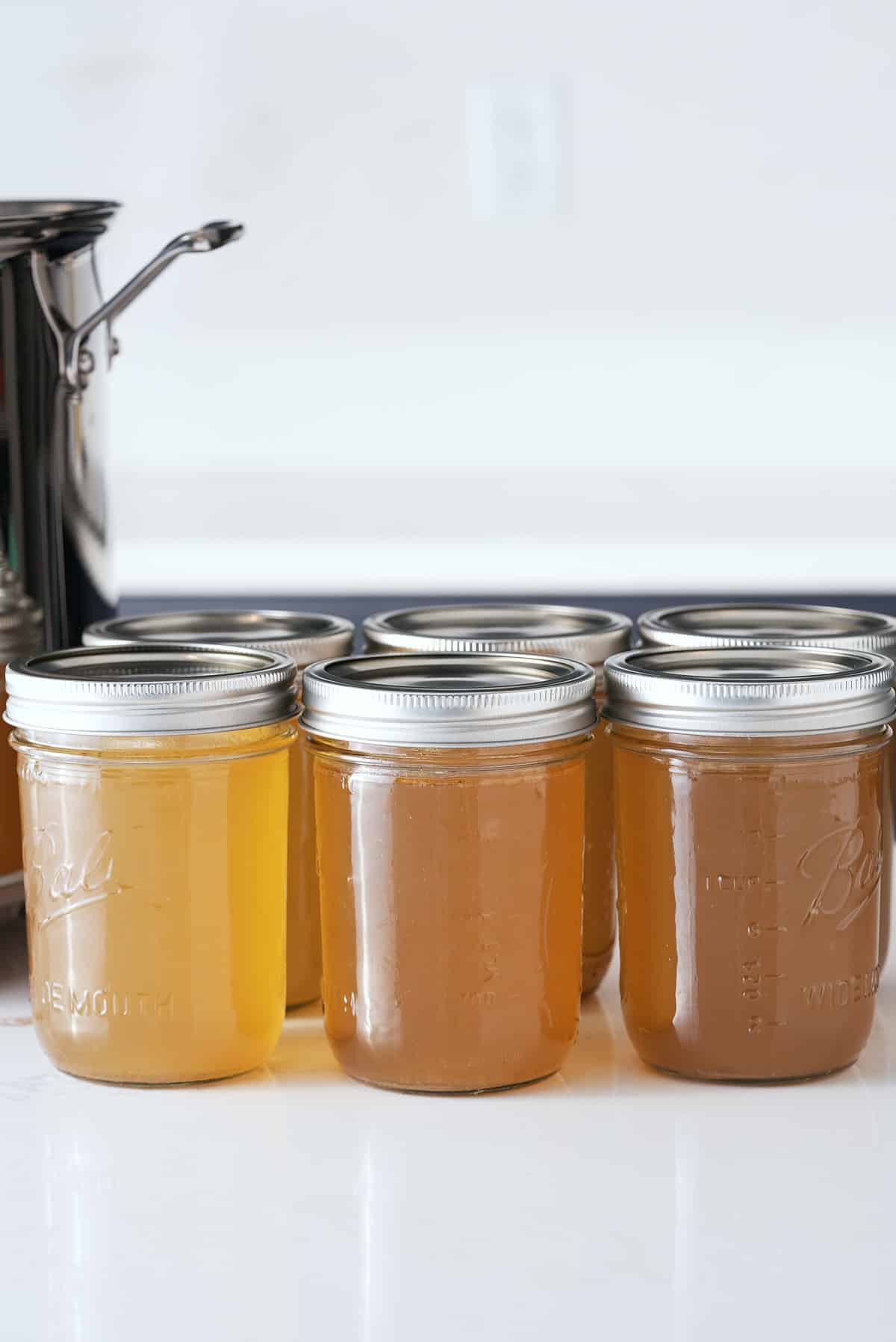
You’ll find the full recipe with ingredient amounts and instructions in the recipe card at the bottom of this post. Be sure to check out the blog post itself for extra tips and tricks!
This easy turkey stock recipe is full of natural flavor. It makes a great addition to my Grandma's Giblet Gravy recipe or any other turkey-based gravy or sauces I might be cooking over the festive holidays. You can also add it to soups and stews. I also love to use it to cook my rice. It adds the perfect amount of flavor.
I like making my own homemade stocks and broths; that way, I know what's going into them. Homemade turkey stock is always healthy as it contains no preservatives and is naturally gluten-free.
For another great additive-free recipe, try my delicious Homemade Shrimp Stock.
Ingredients
Here's what you will need to make the best turkey stock:
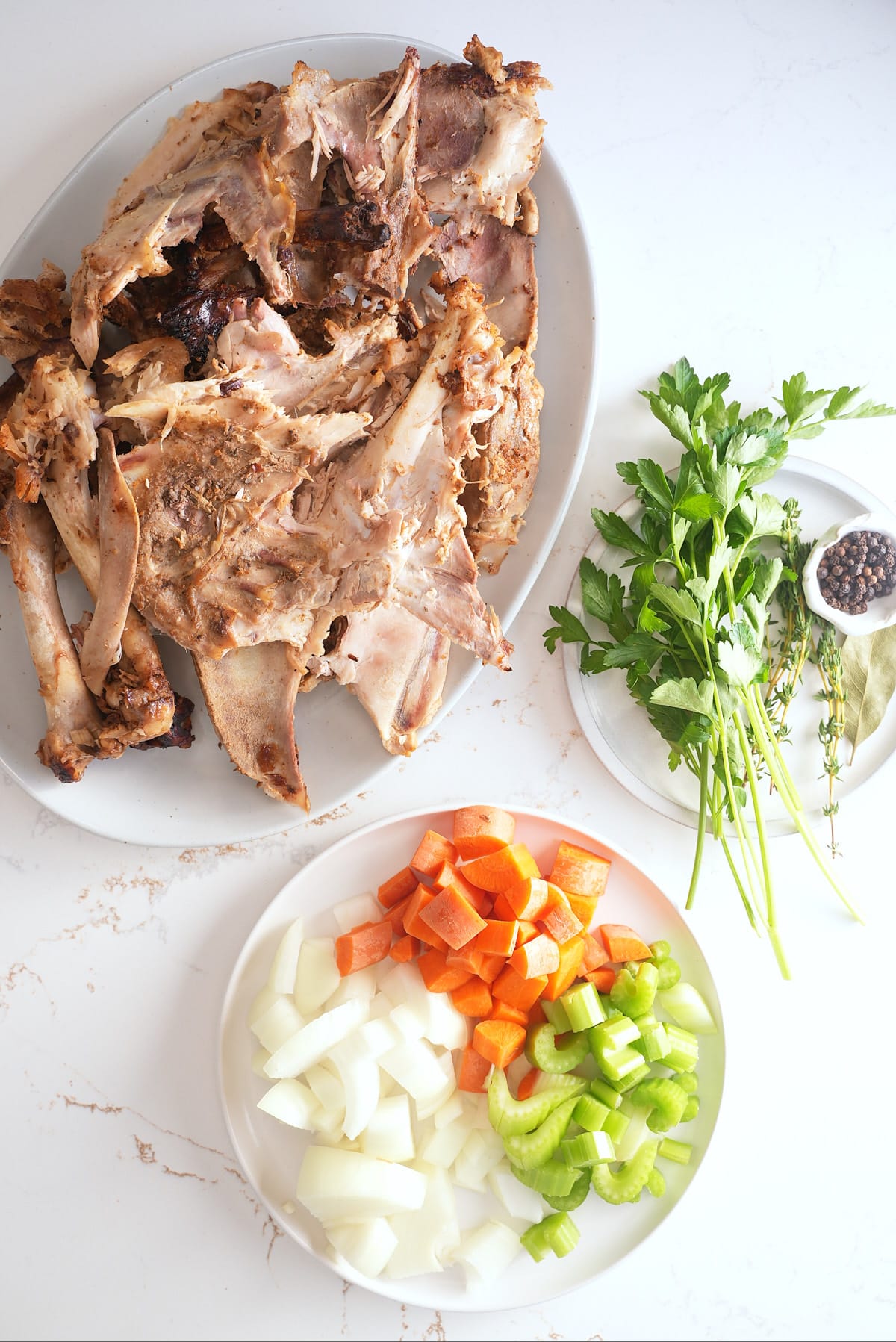
- Turkey carcass and bones - from a cooked turkey, meat removed.
- Aromatics and herbs - I use onion, carrot, celery, parsley, thyme, bay leaf, black peppercorns and kosher salt.
- Cold water - enough to cover the bones in a stockpot by 2 inches.
Equipment needed
- Large stock pot - large enough to hold a whole turkey carcass, otherwise chop the carcass up. I like to use this one, so I don't need to use an extra stainer.
- Large sieve or colander - or use a large stock pot with fitted strainer.
- Ladle
- Mason jars - or similar for storage
How to make turkey stock from the carcass
Place the bones in a large stock pot. Cover the bones with cold water and place over medium heat. Bring the water to a gentle simmer.
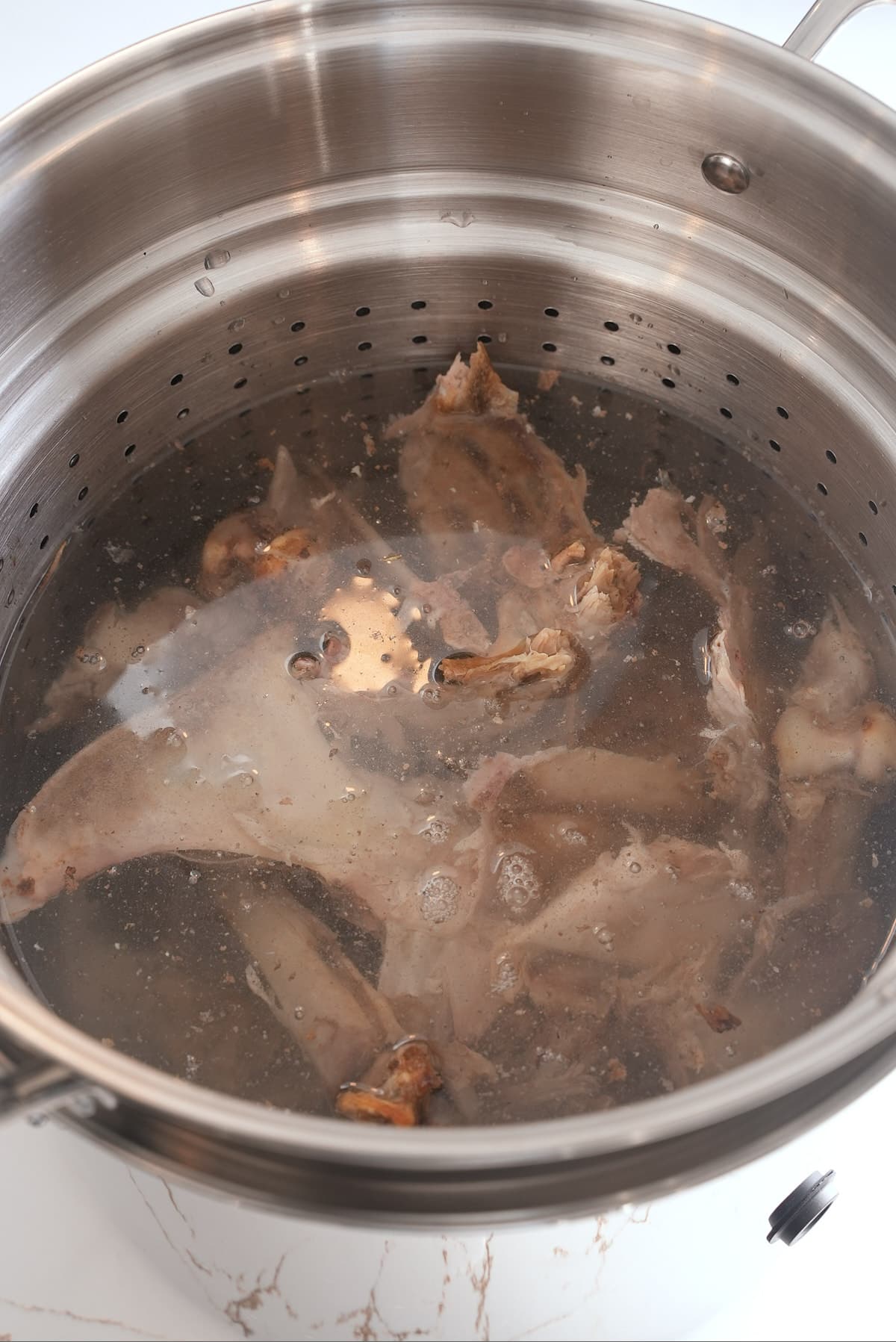
Allow the bones to simmer for 1½ hours, skimming any fat or scum that rises to the surface.
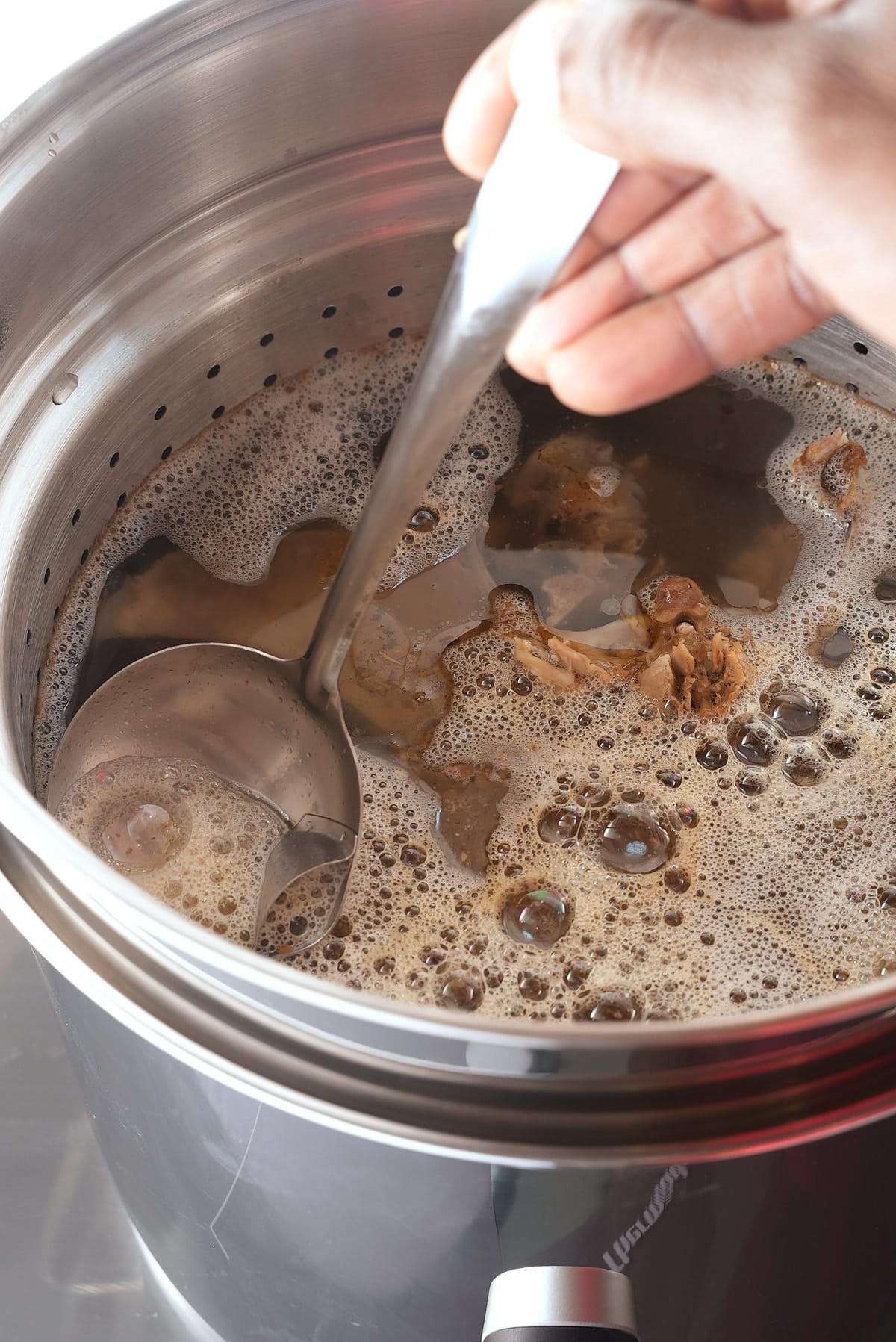
Add the onions, carrot, and celery to the pot and allow to simmer for another 2 hours, occasionally skimming any fat or scum that rises to the surface.
Add the parsley, thyme, bay leaf, and black peppercorns and allow to simmer for an additional 30 minutes.
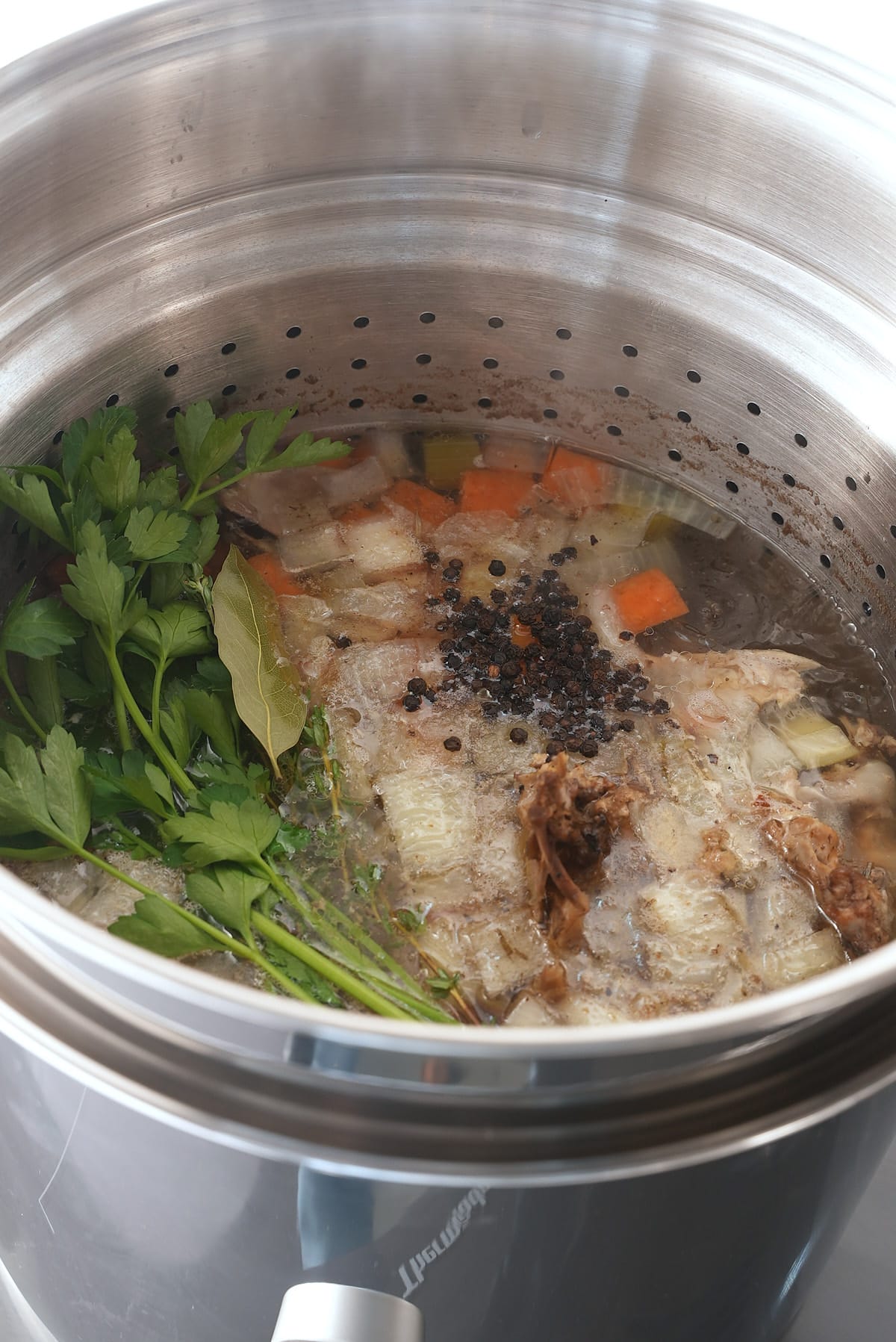
Strain the stock by removing all the solids from the liquid. You can pour it through a strainer or a strainer lined with cheesecloth. At this stage you can season the stock with salt to taste.
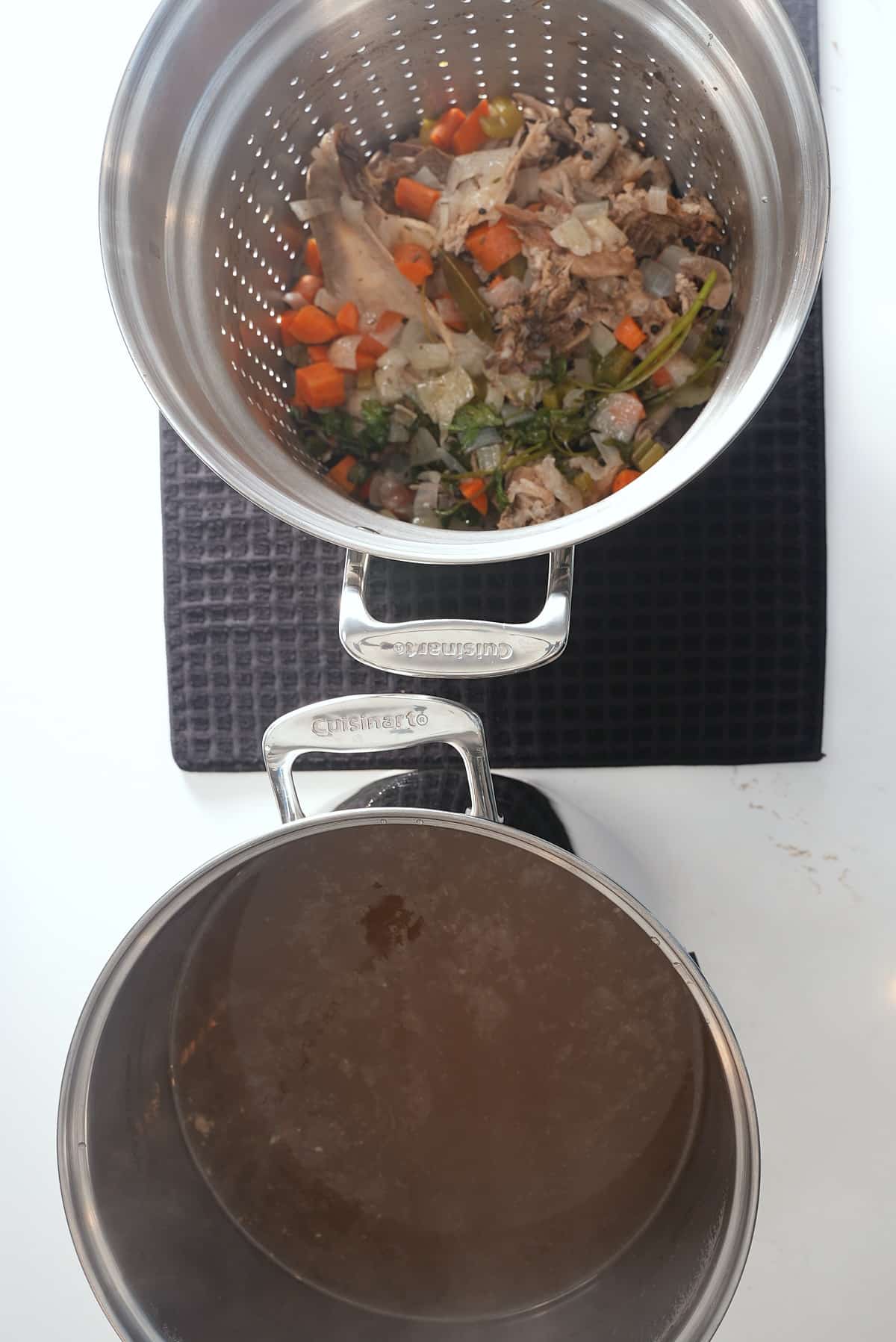
Use the stock immediately or allow it to cool quickly before refrigerating or freezing. Use the stock in any recipe that calls for broth or stock.
Other cooking methods
This recipe is easily adapted to suit other methods of cooking and I've detailed those below.
How to make turkey stock in Instant Pot
Add the turkey carcass to the Instant Pot along with the remaining ingredients, except for the salt. Cover the pressure cooker and cook on high pressure for 30 minutes, then allow the pressure cooker to naturally release for 10 minutes.
How to make turkey stock in slow cooker
Add all the ingredients, except for the salt, into a slow cook and cook on low for 6-8 hours.
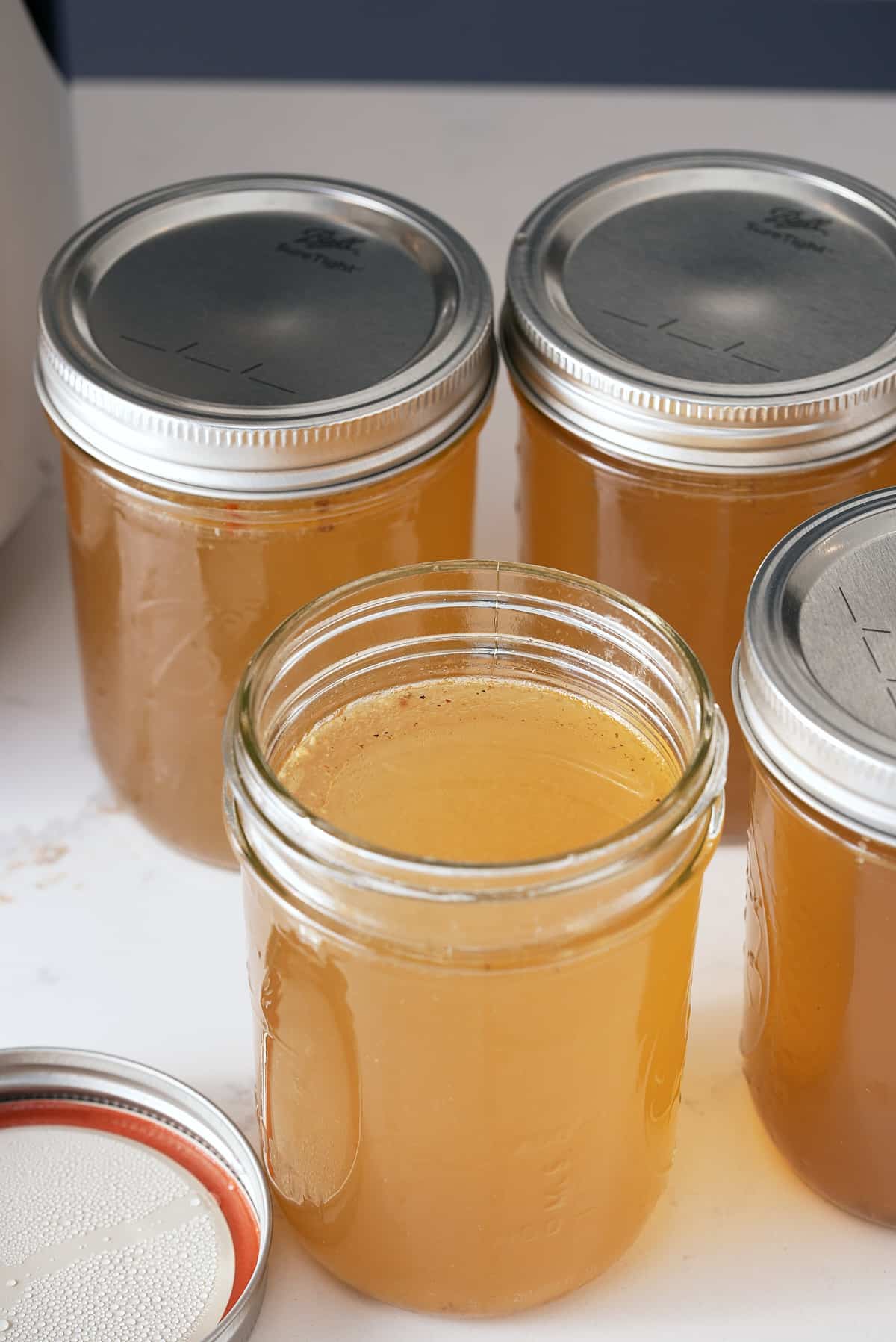
How to cool stock quickly?
You can add the turkey stock to smaller containers to allow it to cool quickly. I prefer to add it to smaller mason jars. Alternatively you can follow the steps below:
Or you could also add ice to a large bowl and pour some of the stock in a smaller bowl.

Insert the smaller bowl into the large bowl, and add cold water to the side of the large bowl.
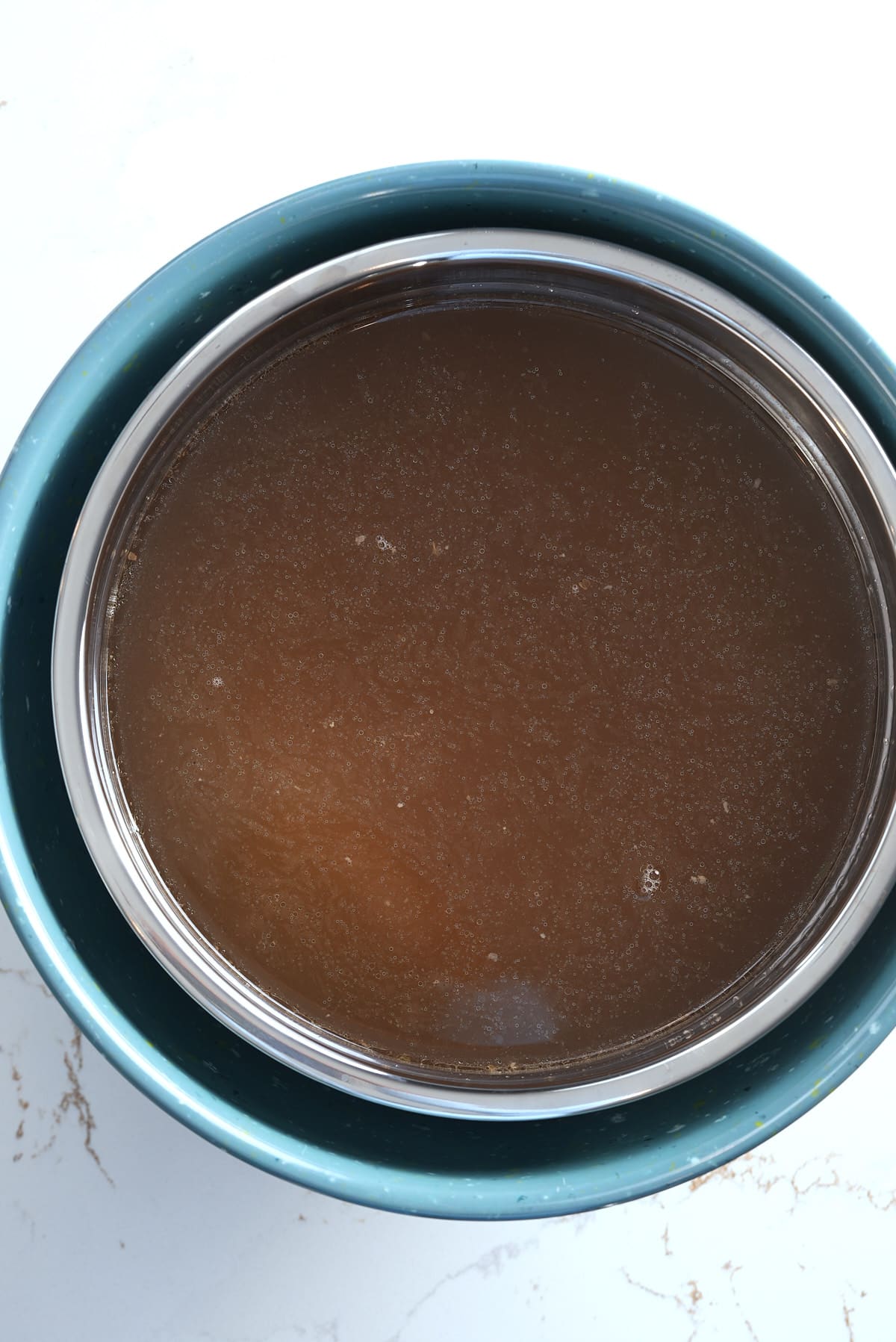
This will allow the stock to be surrounded by cold water and will cool the stock faster.
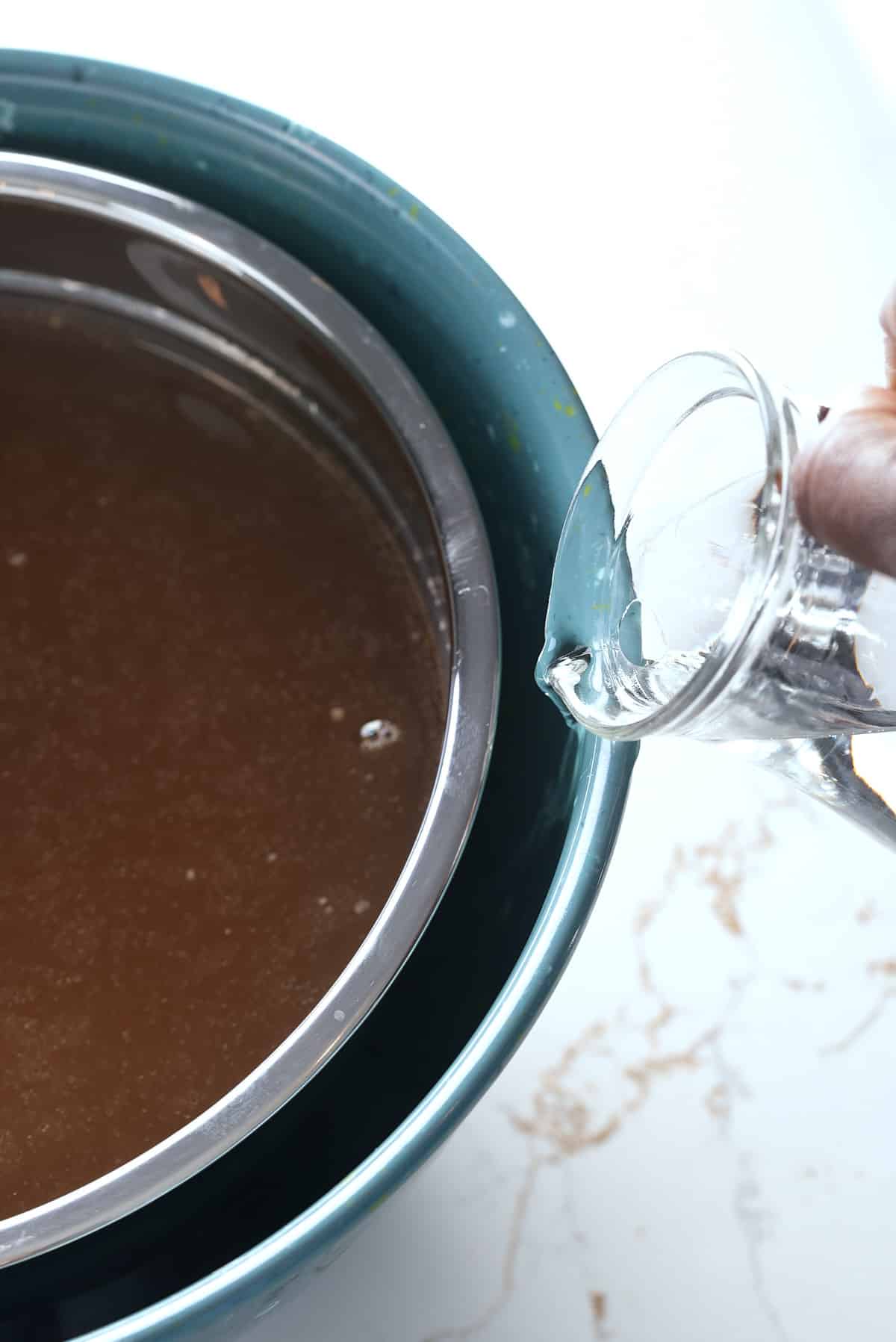
Uses for turkey stock
Good quality homemade stock can be used in a variety of dishes. It will really enhance the flavour of any gravy and makes a great base for soups and stews.
Recipe tips
- When preparing your turkey stock, ensure it only simmers gently, as boiling can lead to a cloudy stock with diminished flavors.
- I use a large stock pot with a strainer when making stock. It allows me to remove the solids from the liquid easily.
- Once the broth has cooled in the refrigerator overnight, you can easily skim off the fat that has risen to the surface with a spoon.
- Don't season the stock with salt during the cook as you will ruin the flavor. As it bubbles away, the stock reduces and you can end up with really salty stock. Instead I season the stock to taste once it has been reduced, or season the food I am adding the stock to.
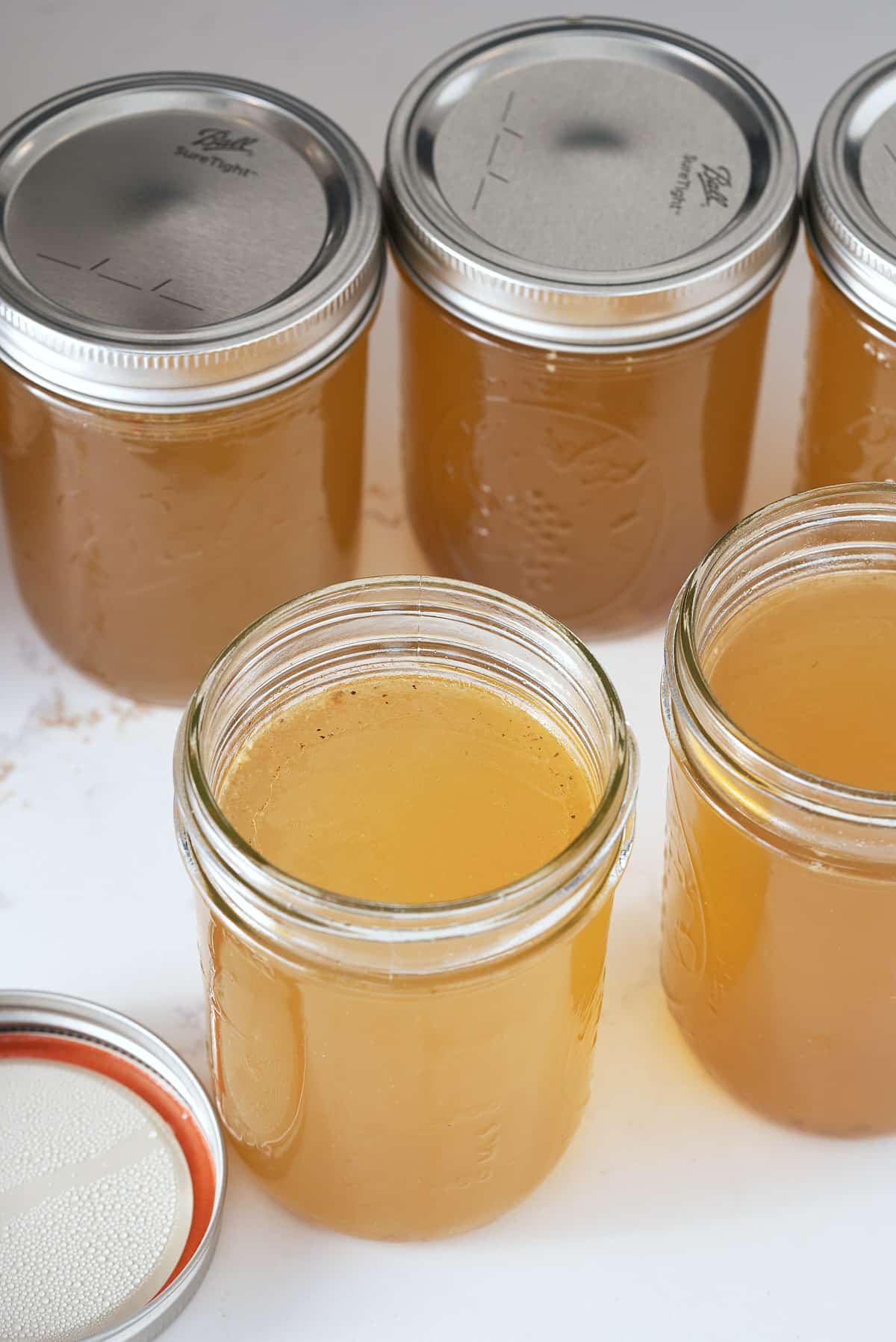
How do you store turkey stock?
To refrigerate: Once cooked allow the stock to cool in the jar or container, then when cold fit with a lid and place in the refrigerator for 3-4 days. When ready to use ensure you heat the stock up to piping hot.
To freeze: Once cooked allow the stock to cool completely and place into an airtight container with a tight fitting lid. Store in the freezer for up to 3 months. Defrost thoroughly and reheat it to piping hot before serving.
FAQs
Although very similar, turkey stock is made with the carcass and bones of the turkey, while turkey broth also includes raw turkey meat. So broth has a slightly richer flavor than stock.
Homemade turkey stock always tastes better as you can tailor the recipe to suit. You can adjust the flavorings and aromatics, and also the amount of salt that you add to a homemade stock.
Yes, homemade turkey stock is good for you as there are no unnecessary additives and preservatives in a homemade stock, just simple, natural ingredients.
If you have tried this homemade turkey stock recipe or any other recipe on my blog, then please rate it and let me know how it turned out in the comments below.

How to make Turkey Stock (from the carcass)
Ingredients
Equipment
Instructions
- Place the bones in a large stock pot. Cover the bones with cold water and place over medium heat. Bring the water to a gentle simmer.
- Allow the bones to simmer for 1½ hours, skimming any fat or scum that rises to the surface.
- Add the onions, carrot, and celery to the pot and allow to simmer for another 2 hours, occasionally skimming any fat or scum that rises to the surface.
- Add the parsley, thyme, bay leaf, and black peppercorns and allow to simmer for an additional 30 minutes.
- Strain the stock by removing all the solids from the liquid. You can pour it through a strainer or a strainer lined with cheesecloth. At this stage you can season the stock with salt to taste.
- Use the stock immediately or allow it to cool quickly before refrigerating or freezing. Use the stock in any recipe that calls for broth or stock.
Nutrition
Notes
- When preparing your turkey stock, ensure it only simmers gently, as boiling can lead to a cloudy stock with diminished flavors.
- I use a large stock pot with a strainer when making stock. It allows me to remove the solids from the liquid easily.
- Add the stock to smaller containers to allow it to cool quickly. I prefer to add it to smaller mason jars. You could also add ice to a large bowl and pour some of the stock in a smaller bowl. Insert the smaller bowl into the large bowl, and add cold water to the side of the large bowl. This will allow the stock to be surrounded by cold water and will cool the stock faster. The stock should then be refrigerated or frozen. It will last in the fridge 3-4 days or can be frozen for up to 3 months.
- Once the broth has cooled in the refrigerator overnight, you can easily skim off the fat that has risen to the surface with a spoon.


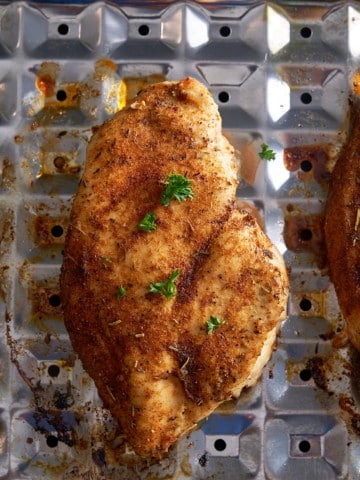

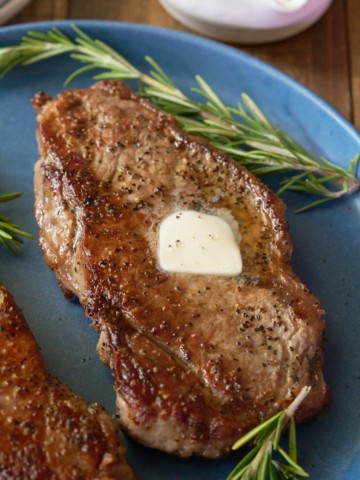
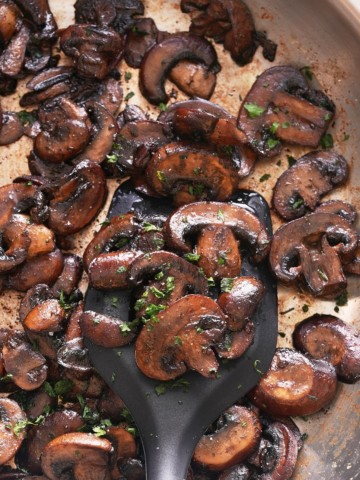
Leave a Reply